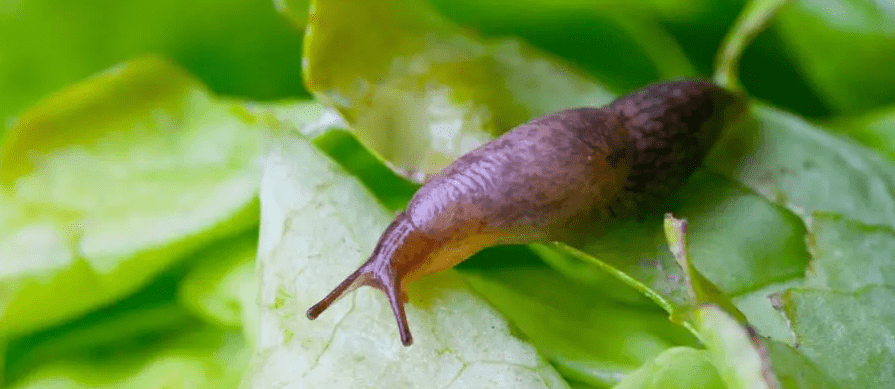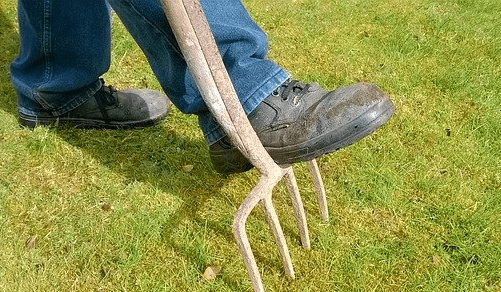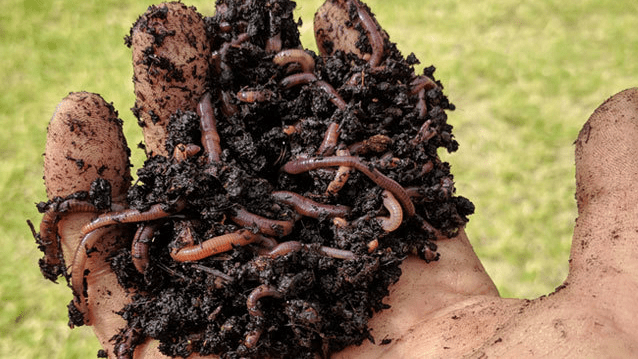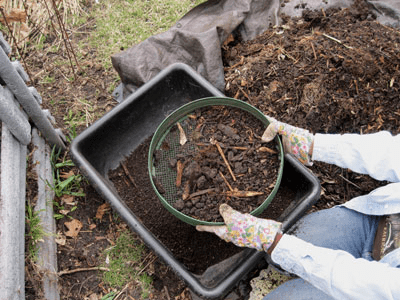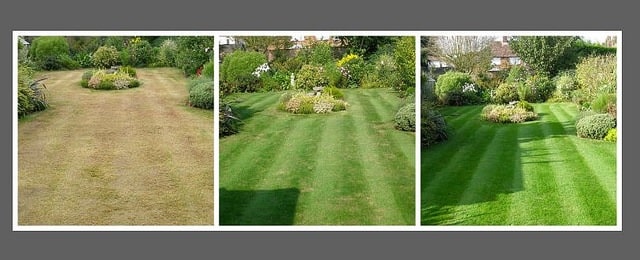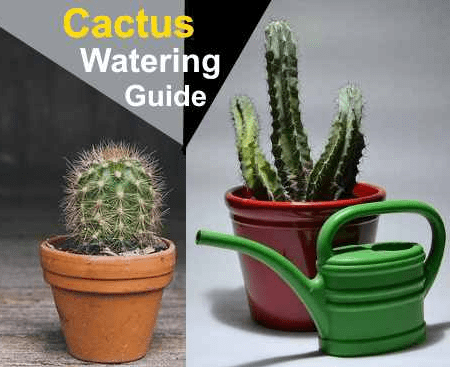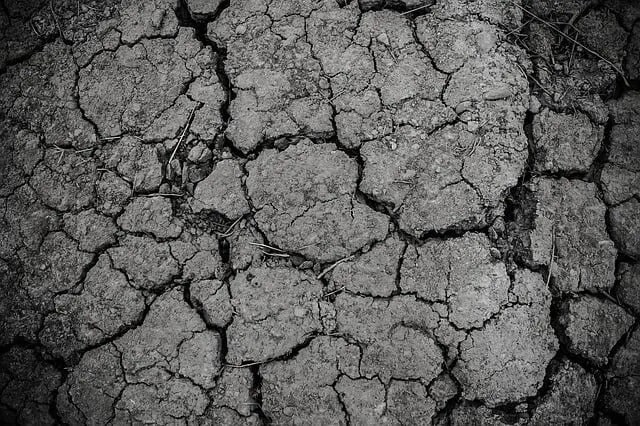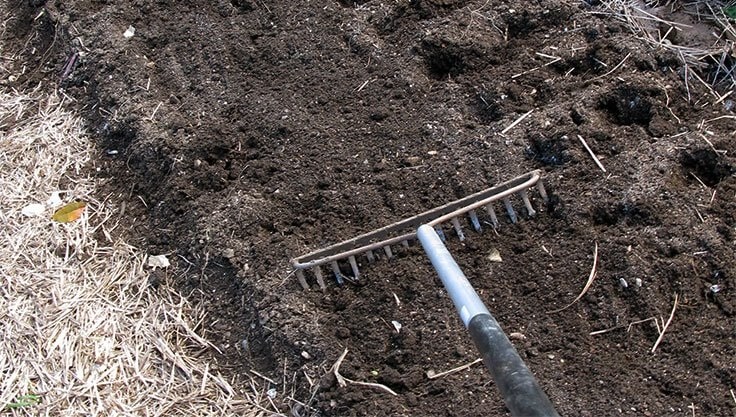Radishes (Raphanus sativus var. sativus) score points for their undemanding nature and rapid harvest maturity. Therefore, they are particularly in demand for home cultivation. Unfortunately, radishes sometimes bloom unexpectedly early. Are they still edible then?
Contents
- 1 To the point
- 2 Poisonous or edible?
- 3 How the tuber changes
- 4 Factors influencing the flowering time
- 5 Incorrect sowing depth and spacing
- 6 Sunny location
- 7 Warm weather
- 8 Ripe tubers
- 9 Preventing harvest losses
- 10 Note the sowing date
- 11 Use other parts of the plant
- 12 Frequently asked questions
- 13 Can I obtain seeds for propagation from flowering radish tubers?
- 14 Is there anything I can do to prevent early flowering?
- 15 Are multiple, staggered sowings worthwhile?
- 16 Author
To the point
- Tubers edible during flowering, but increasingly bitter and woody
- Tuber maturity, great sowing depth and warm, dry weather promote early flowering
- check harvesting level closely, harvest promptly
- after flowering, harvest only edible seed pods or ripe seeds
- Summer varieties tolerate more heat and drought, are more resistant to lodging.
Poisonous or edible?
Despite claims to the contrary, flowering radishes are not poisonous! The red tubers remain edible without hesitation. But this all-clear does not mean that harvest time can blithely continue. This is because the formation of flowers is accompanied by changes to the tuber. The further the flower formation progresses, the more inedible it becomes.
How the tuber changes
The ideal radish tuber is crisp-tender, has a refreshing aroma with a slight pungency. As soon as the plant turns to the flowers, its taste and consistency begin to change.
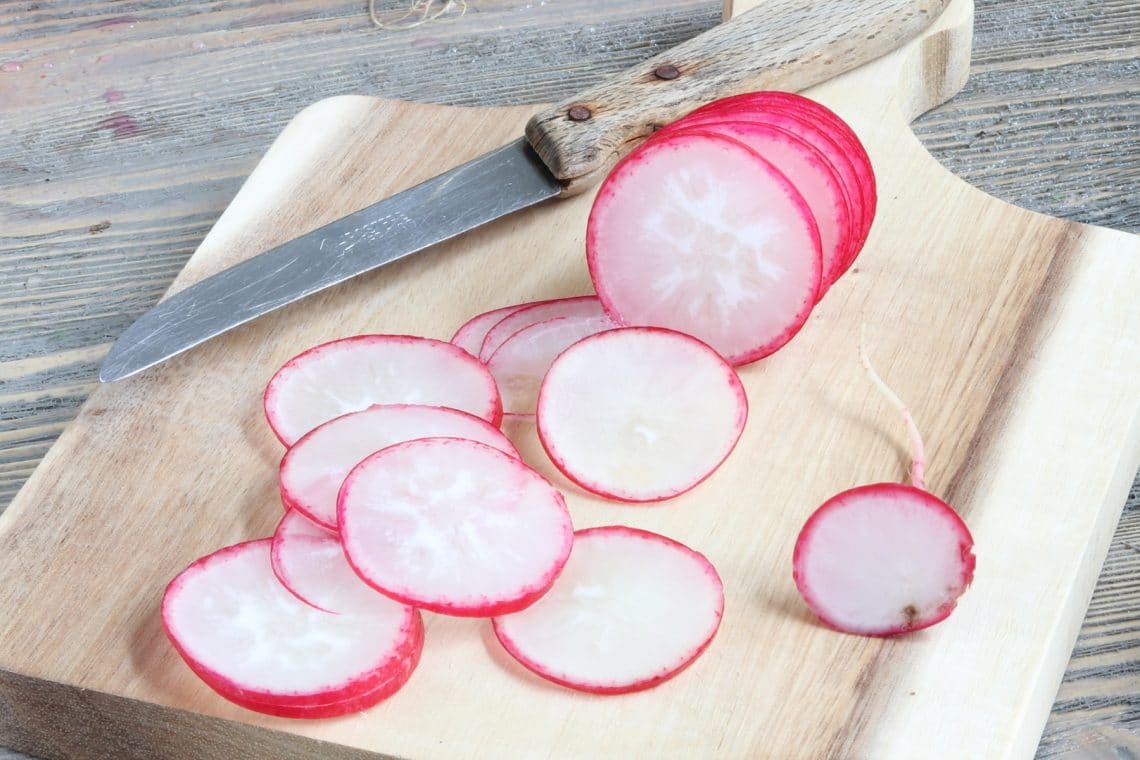
- Bitter substances are stored
- taste becomes more and more bitter
- increasingly fibrous areas form
- Tuber tastes woody
- the inside becomes drier
- Significance for the harvest time
Since flowering radishes are not a treat, the flowering period clearly puts an end to the harvesting period. Consequently, all tubers should have been taken out of the ground even before the first flowers appear. For this, however, the gardener must know when his sown radishes will bloom.
Factors influencing the flowering time
Radishes sown in the spring usually bloom in May or June. But some factors can cause them to shoot up and form flowers prematurely.
Incorrect sowing depth and spacing
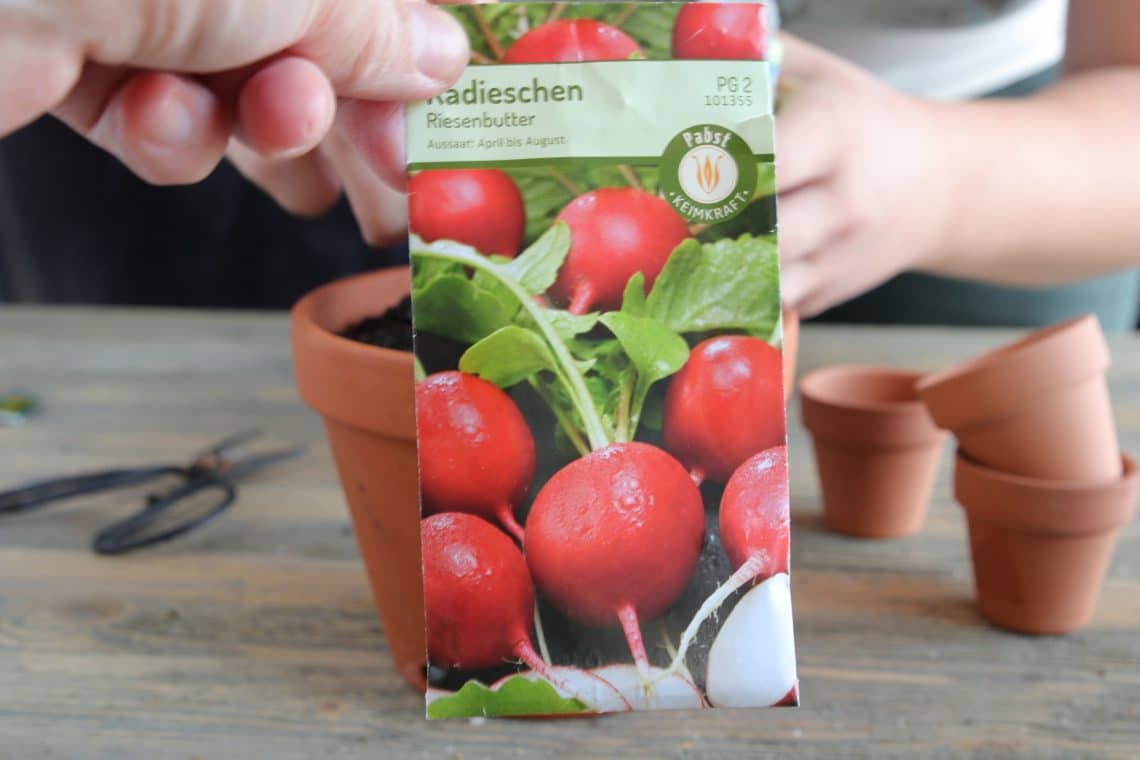
If radish seeds are sown too deep, they either do not germinate at all, or the plants shoot up and flower without first forming proper tubers. Too close planting leads to nutrient competition, which in turn leads to premature flowering. Here’s what you need to know about seed depth and planting distance:
- Cover seeds with only a little soil
- ideal sowing depth is 0.5 cm
- never sow deeper than 1 cm
- Keep a planting distance of 3-5 cm
Sunny location
In a full-sun location, there is a risk that it will provide too much heat and too dry soil. Both factors ensure that the popular tuberous plants bloom earlier.
Tip: If you don’t have a semi-shaded bed in your garden, at least sow radishes next to taller, shade-giving vegetables.
Warm weather
If the days are prolonged hot and dry, flowering often shows up before the tubers have properly formed. Therefore, in summer the risk of early flowering is greatest.
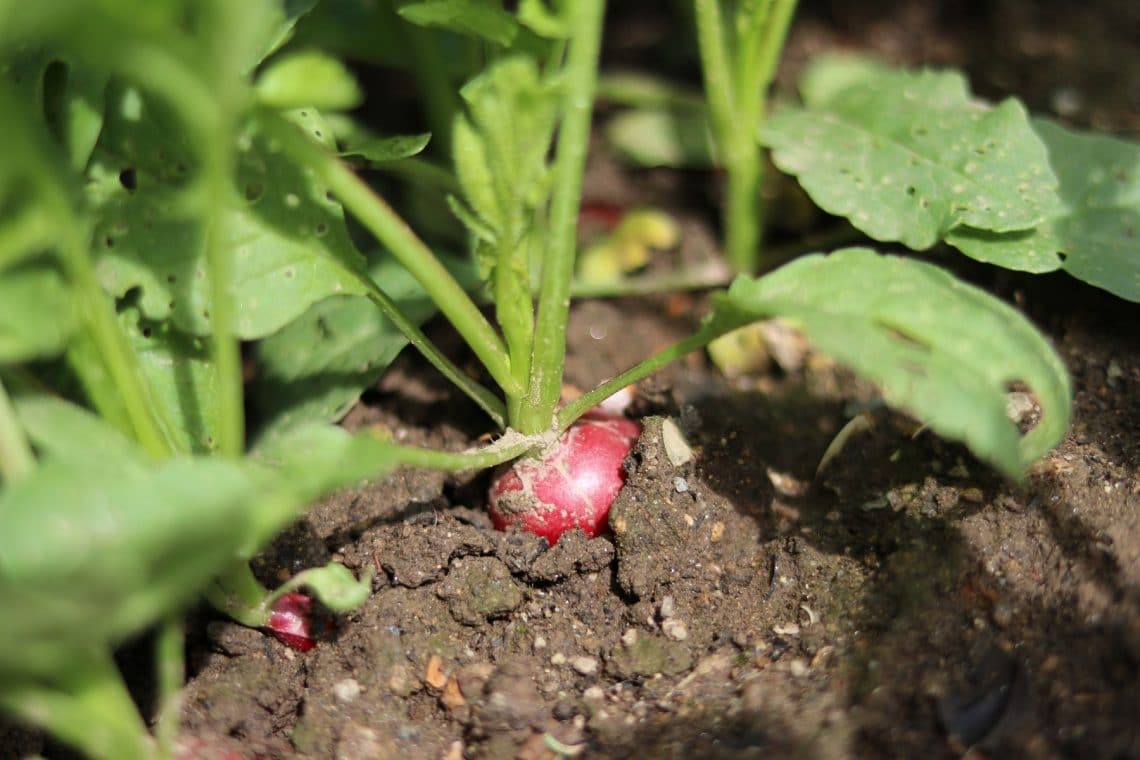
Tip: If you do not want to do without your own radishes in the summer, be sure to reach for summer varieties such as “Carnita”, “Olivia”, “Rota”, “Sora” or “Vitessa”, which are considered to be shoot-resistant.
Ripe tubers
Leaving ripe tubers in the bed does not prolong the harvest. Instead, substances are formed without delay that trigger flower formation. This proceeds in rapid steps, so that the first flowers soon appear.
Preventing harvest losses
Every gardener should keep a close eye on the development of radishes so that no tuber is lost.
Note the sowing date
- aim for harvesting about 4-6 weeks later
- pay attention to the influence of warm weather
- Regularly check the ripeness of the tubers
- harvest quickly when tuber diameter is 2-3 cm
- harvest window in spring is about 10 days
- in summer only 3-4 days
- if necessary, also harvest smaller tubers
- store in the refrigerator (for a few days) until consumption
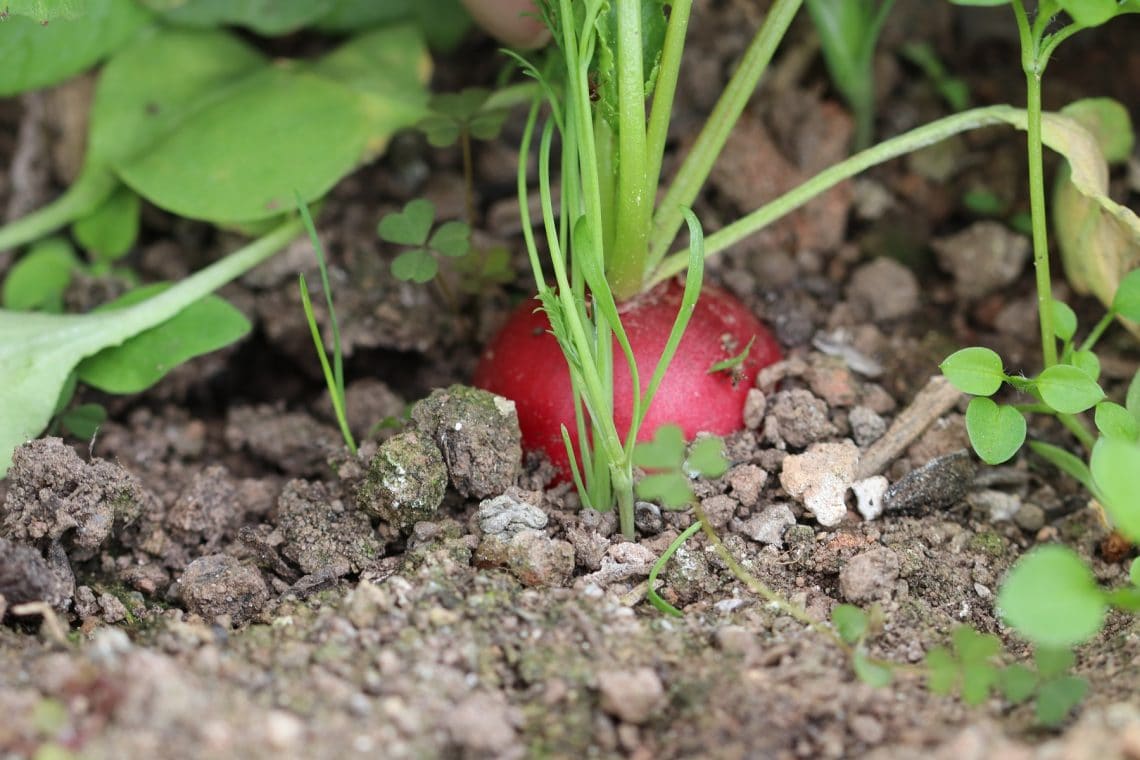
If shooting has already begun unexpectedly, everything should be harvested immediately. Possibly, the slightly bitter taste of the tubers is still acceptable. Isolated woody areas can be cut off.
Tip: In order not to miss the start of harvesting, you should check the degree of ripeness of the tubers daily, at the latest three weeks after sowing.
Use other parts of the plant
If the plants unexpectedly bloom already, on the one hand you can be sad about the loss of the tubers. On the other hand, another culinary voyage of discovery awaits. The yellowish-brown pods that form after flowering are edible and interesting salad ingredient. Their aroma is mildly spicy with a slight mustard note, their consistency soft.
Frequently asked questions
Can I obtain seeds for propagation from flowering radish tubers?
Yes, it is possible. But it is not recommended. Plants from seeds of shooting plants also tend to shoot. It is better to grow healthy sprouts from harvested seeds in winter.
Is there anything I can do to prevent early flowering?
Of course, you have the option of choosing a shadier location for radish plants. Otherwise, you can place bamboo mats on warm days to provide shade.
Are multiple, staggered sowings worthwhile?
Partly. By doing so, you prevent many tubers from being ready for harvest at the same time and having to be harvested within a few days. The action of the weather as a flower accelerator is not affected.


